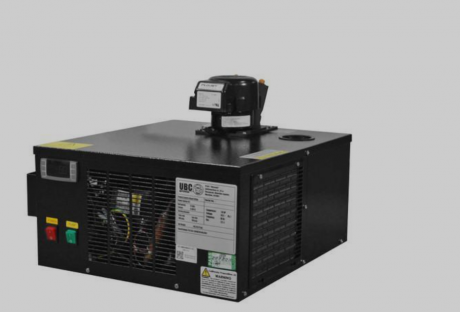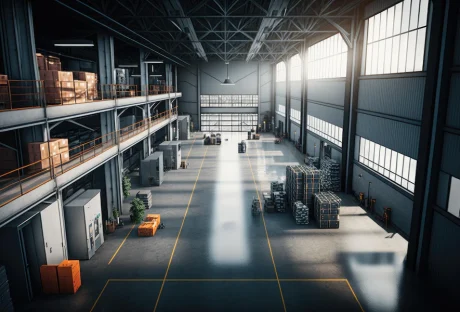Plant control instruments play an extremely important function in the constantly shifting environment of industrial operations. These devices monitor and control a variety of processes within the plant, which has a substantial impact on overall productivity.
This article digs into the quality plant control instruments available to study how they can work as catalysts for higher output.
Navigating the Industrial Landscape
Precision and control are of the utmost importance in the complicated ecology of the industrial sector. Instruments used for plant control are essential in preserving the delicate balance that must be kept for activities to go without interruption.
These devices are the unsung heroes behind the scenes, and their responsibilities range from temperature regulation to pressure management.
Sensors
Sensors are the “eyes and ears” of every control system, serving in this capacity as the system’s “central nervous system.” These devices monitor the environment for any shifts in conditions and relay that information to the control system in real-time.
Temperature sensors, for instance, can be installed in a factory to ensure the working environment is conducive to efficient output. This process minimizes damage to the equipment and guarantees that the end product will be of high quality.
Actuators and Control Valves
Actuators and control valves are the components that step into the spotlight when implementing changes based on sensor data. The actuators translate the signals from the control system into action.
Imagine a situation where exact fluid flow management is necessary; in this case, the control valves would take center stage. These instruments accurately control the flow, minimizing waste and making the most available resources.
PLCs and SCADA Systems
The efficiency of industrial processes is not solely dependent on the performance of its separate parts; rather, it is contingent on how well those parts are orchestrated. Conductors of this symphony are served by Supervisory Control and Data Acquisition (SCADA) systems and Programmable Logic Controllers (PLCs).
While programmable logic controllers (PLCs) ensure that the various parts collaborate well, supervisory control and data acquisition (SCADA) systems offer an overview of the entire process. Together, they make it possible to make decisions and troubleshoot issues quickly, which helps to reduce downtime.
Human-machine interface (HMI)
In today’s increasingly automated world, human-machine interfaces, or HMIs, make it easier for humans and machines to communicate and collaborate. These interfaces offer operators a straightforward method for monitoring and controlling the user-friendly system.
HMIs enable operators to make quick, educated decisions because of their user-friendly displays and controls, which contribute to the system’s overall efficiency.
Improving Efficiency Using Plant Control Instruments
Instrumentation and control systems have the potential to become the “brains” of your company when they are properly programmed. This study area is changing due to the introduction of new, more affordable technology. If implemented as planned, these adjustments may result in considerable benefits, such as greater productivity and decreased expenditure.
Collaborating to Calibrate Success
Cooperation between individuals is essential to developing efficient instrumentation and control systems that can produce comparable cost reductions. Engineers, technicians, and programmers must work together from concept design to 100% completion and startup to produce high-quality outcomes.
This process is especially true on design-build projects. Project teams want to begin functioning as a single integrated entity as soon as practicable. If they understand the costs and benefits of each option, the team can construct the right instrumentation and control architecture for the task and intelligently build to meet specifications.
Instrumentation and control engineers can also respond swiftly to design and scope changes as they occur and alter systems accordingly, thanks to continuous interface and communication. This results in improved ease of operability and reduced the number of wasted resource hours.
Making Real-Time Improvements
In recent years, advancements in software and hardware for instrumentation and control have made them more dependable, adaptable, and user-friendly. As a result, the connectivity between process equipment and instrumentation has also improved.
These technological improvements enable to supply operators of facilities with the appropriate information at the appropriate time. Operators are provided real-time control over several aspects of their manufacturing process, such as the workers, machinery, and support services.
Monitoring and Regulation
In a plant, it is the job of the instrumentation and control systems to monitor and maintain various characteristics such as temperature, pressure, flow, level, and quality. These systems deliver real-time data on the conditions of the process, allowing operators to make educated decisions and take preventative measures to keep operating conditions at their optimal level.
The evolution of instrumentation and control software and hardware over the past years has made it more flexible, dependable, and user-friendly. As a result, communication between the process equipment and the instrumentation that controls it has improved.
Because of this, operators can exercise control in real time on production-related components such as equipment, support services, and other associated components.
Redundancy and Fail-Safe Mechanisms
Reliability is something that cannot be compromised in the field of plant control instruments. Redundant and fail-safe mechanisms serve as safety nets, ensuring business operations continue without interruption, even in the face of unforeseen occurrences.
This process is of the utmost importance in fields such as manufacturing, where even a short downtime can result in large monetary losses.
Taking Control of Costs
For facilities that are managed by instrumentation and control, technological advancements have led to a range of cost-related benefits, including the following:
- Enhanced operational efficacy that lowers the risk of making financially detrimental errors.
- Because of increased automation, fewer people will be needed to run operations.
- Potentially higher product output as a result of improved automation
- A faster response time for addressing issues and warnings
- Virtualization, which lowers the necessary amount of hardware while also increasing both dependability and flexibility
- Guarantee of an excellent level of performance from both the controls and the end product
Elevate Operations Through Quality Instruments
It is impossible to overestimate how much influence high-quality plant control devices have on efficiency.
To maintain a competitive edge in the current business environment, investing in control instruments at the cutting edge of technology is not merely a recommendation but an absolute requirement. You can check out https://www.pcipro.net/ to guarantee the quality of the instrumentation and controls you will use for your business.
Adopting these technological advances will unquestionably determine the performance of industries, opening the way for a brand-new era of highly efficient and productive operations.
Read Also:






















